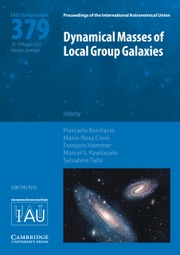No CrossRef data available.
Article contents
SS433 and the nature of ultra-luminous X-ray sources
Published online by Cambridge University Press: 01 August 2006
Abstract
The prototypical micro-quasar, SS433, one of the most bizarre objects in the Galaxy, is a weak X-ray source, yet the kinetic energy of its relativistic, precessing jets is vastly greater. In spite of its importance as the nearest example of directly observable relativistic phenomena, we know remarkably little about the nature of this binary system. There are ongoing arguments not only about the mass of the compact object, but even as to whether it is a black hole or a neutron star, an argument that recent high resolution optical spectroscopy has contributed to.
Combined with the INTEGRAL discovery of a new class of highly obscured galactic high-mass X-ray binaries, one of which has been found to precess on a similar timescale to SS433, we suggest that these would indeed be seen by external observers as ULXs, once additional effects such as beaming (either relativistic or geometrical) are included.
- Type
- Contributed Papers
- Information
- Proceedings of the International Astronomical Union , Volume 2 , Symposium S238: Black Holes from Stars to Galaxies – Across the Range of Masses , August 2006 , pp. 219 - 224
- Copyright
- Copyright © International Astronomical Union 2007


